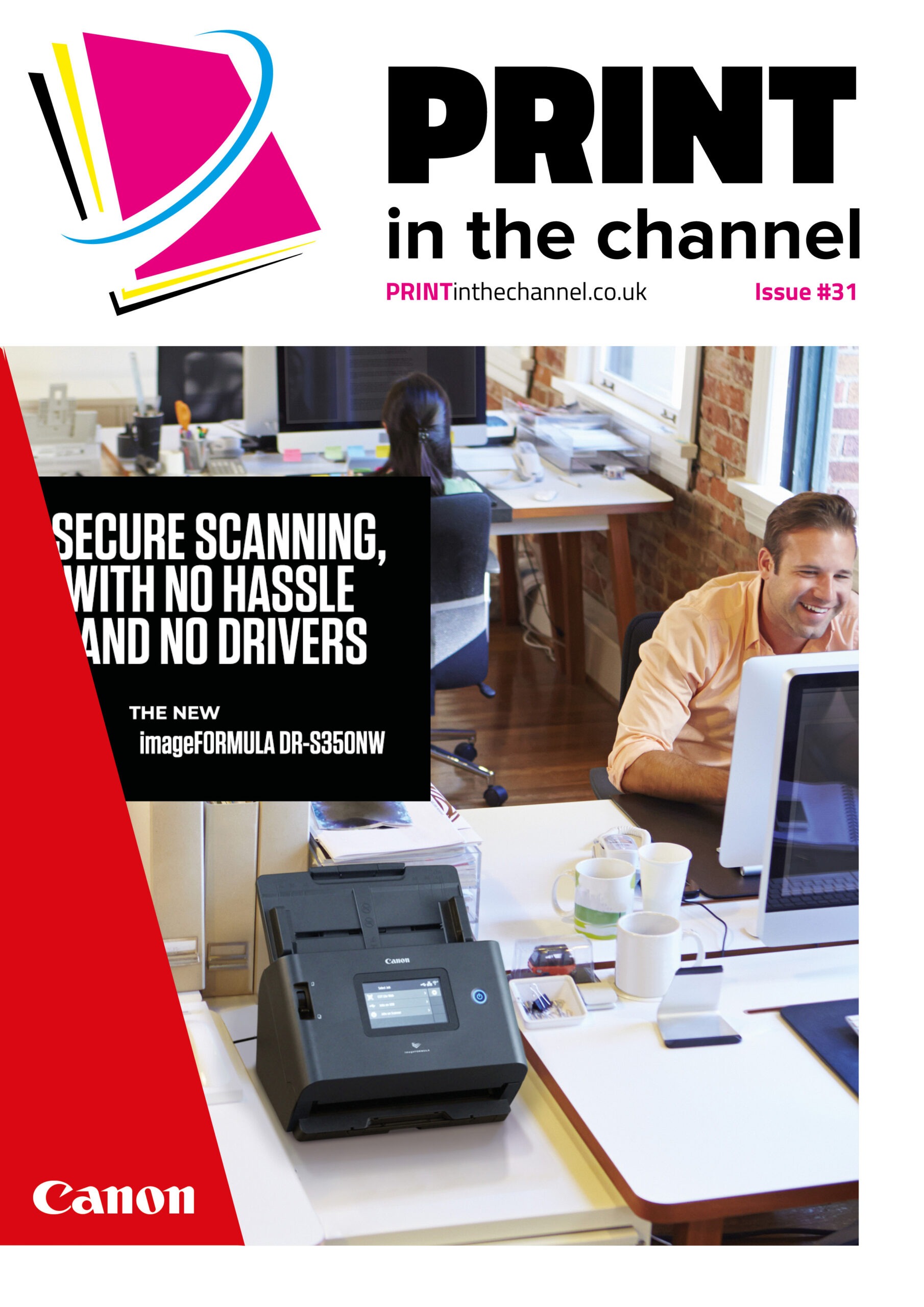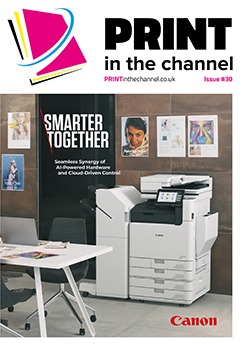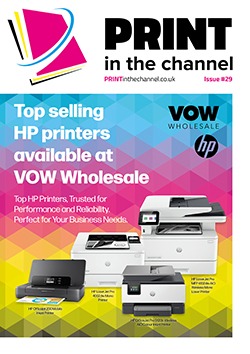For businesses in warehousing and logistics, efficiency is a key priority, and using mobile printers can help operators to achieve that. But as their popularity grows, so customer demands are also changing, which resellers need to be alive to.
The growth in ecommerce isn’t slowing down, and neither is the desire from customers for ever-increasing speed of delivery. This puts pressure on businesses in the warehousing and logistics sector to be as efficient as possible to ensure that deliveries go out on time.
A key part of this is printing and is why mobile printing solutions are becoming increasingly popular for many businesses in these sectors.
Bob Vines, country manager for the UK, Ireland and the Nordics at TSC, says that there are several advantages for warehousing and logistics businesses of using mobile print devices, over traditional static devices.
“Mobile printers are increasingly popular because they’re always within arm’s reach of the warehouse operative or delivery driver, so they don’t have to keep returning to central printing stations for on-demand labels,” he says. “The devices can be carried on the shoulder or strung from a belt clip or even affixed to (and recharged) on warehouse vehicles like forklifts, stackers, pallet jacks and carts.
“TSC Auto ID’s Alpha-30L and Alpha-40L can be installed on vehicles using its vehicle adaptor that is compatible with third-party mounts like RAM® mounts. There is also a quick-release vehicle mount kit to easily detach the printer, allowing the operator to use it elsewhere or return it to the office at the end of the shift. The mobile printer can be attached and detached in seconds but is securely fixed when in use, enhancing mobility and flexibility for diverse tasks.”
Harriette Wysocki, country manager UK&I at Jarltech, adds that the increase in popularity of mobile print devices across warehousing and logistics has been driven by the demand for real-time, on-the-go productivity. “Compared to static printers, mobile devices allow workers to print labels, receipts and documentation exactly where and when they’re needed – on the warehouse floor, in vehicles or at loading bays,” she says. “This flexibility reduces walking time, increases accuracy and improves throughput. Their rugged design and wireless capabilities make them ideal for fast-paced, high-demand environments.”
Trends
As the popularity of mobile print devices grows, customer demands are changing too. For instance, Harriette says that customers are seeking solutions that offer seamless integration, enhanced durability, and long battery life. “There’s a growing focus on connected, end-to-end ecosystems combining mobile printers with rugged handhelds, software and cloud-based platforms,” she says.
“We’re also seeing increased demand for custom software integrations, which is why working with ISV partners is critical. Businesses want more than hardware – they want tailored workflows and complete, future-proof solutions that improve efficiency and accuracy.”
Meanwhile, the growth in the use of forklifts in warehouses is driving a trend for printer accessories, Bob notes.
“With the boom in ecommerce and omnichannel fulfillment, warehouses have become crucial and are growing in number, which has led to a surge in warehouse vehicles like forklifts, with the market projected to grow by 40% from 2023 to 2031,” he says.
“These vehicles are vital for moving inventory around the premises and, for operations that rely heavily on them, a mobile printer with a shoulder strap isn’t enough, logistics operators need the devices to be easily attached/detached to the vehicles themselves so we’re seeing an increase in demand for things like vehicle mount kits and different types of accessories for charging on the go.
“Our vehicle power adapters cater to cigarette lighter sockets and direct connections to a power source, offering charging flexibility. The battery eliminator is ideal for printers that are always connected to a power source, where a battery is unnecessary. For printers used on and off vehicles, you can conveniently charge them after a shift using either the docking cradle or the dedicated battery charger for removed batteries. We also offer a fanfold media holder, complete with media tray, to ensure smooth feeding to the mobile printer of larger rolls or media that cannot be rolled.”
Sustainability
Of course, warehousing and logistics businesses are also looking for their mobile print solutions to be as sustainable as possible too. One increasingly popular option is linerless label printers. “The sustainability advantages of linerless are increasingly making it a favoured labelling solution as it reduces waste and costs,” says Bob. “No backing liner means waste handling costs are reduced but its benefits go even further in that it diminishes potential safety hazards.
“Operators frequently move about in warehouses or logistics centres, and traditional labels pose risks such as tripping over liner waste or slipping and falling. These incidents can be big or small, but they are a potential threat to worker safety. They can lead to prolonged issues that businesses prefer to avoid. Linerless labelling can effectively reduce such hazards, creating a safer working environment and helping businesses comply with worker safety regulations.”
Harriette adds that sustainability is now a core decision-making factor. “Customers are looking for energy-efficient devices, longer-lasting consumables, and reduced waste through smarter print management,” she says.
“Resellers that can support sustainability goals through managed services – such as device lifecycle tracking, preventative maintenance, and eco-conscious supply options – are well-positioned to win long-term business.”
Reseller conversations
When talking to customers in the warehousing and logistics sectors about mobile print solutions, sustainability is just one factor that should be highlighted, according to Harriette. “Resellers should highlight total cost of ownership, operational efficiency, and the value of flexibility in dynamic environments,” she says.
“Emphasising how mobile printing reduces bottlenecks, improves accuracy, and integrates with existing WMS or ERP systems, particularly when supported by ISV-developed apps, can be a key differentiator. Offering managed services ensures customers have reliable uptime and support.”
Bob adds that although mobile printers align with the ‘on-the-go’ nature of logistics operations, specific requirements may vary based on the working scenarios or environments. “When talking to prospective customers, resellers should get them to consider elements such as mobility requirements, media usage, durability, charging capabilities, compatibility, ease of use, and working conditions as all will influence the most suitable mobile printer device for their needs,” he says.
“Resellers should also reflect on the benefits of linerless labelling when talking to potential customers.”
In addition, resellers should note to customers that while mobile printing is convenient, not every mobile printer will be paired with a dedicated handheld device, according to Bob. “Pairing every device via cable connection, or manually entering pairing information for the first time, is very time-consuming so resellers could emphasise how NFC tap-to-pair is the perfect solution, simplifying device pairing via Bluetooth,” he says. “Our RE310, Alpha-30R, Alpha-30L, Alpha-40L, Alpha-2R and TDM Series all support NFC.”
Future
Looking to the future for mobile print devices, as with print devices aimed at other sectors, artificial intelligence (AI) will have an increasing influence over the next 12-18 months.
“AI will play a growing role in predictive maintenance, print analytics and process automation,” explains Harriette. “We anticipate printers becoming smarter – able to detect usage patterns, auto-diagnose issues, and adapt to workflow changes in real time. As warehouses evolve toward more intelligent, automated operations, resellers and ISVs will be central to delivering these next-generation, integrated solutions.”
Bob adds that there will also be increased adoption of augmented reality in this sector. “This enhances user experience and training,” he says.
There will also be an increased focus on sustainability, he adds. “There will be a push towards eco-friendly materials and energy efficiency. In addition, extend mobile device life cycles to meet eco-design and eco-friendly practices.”
Connectivity will also be enhanced, Bob says. “There will be enhanced WIFI security and IoT integration for better performance.”
This will build on current trends in mobile barcode solutions, such as integration with mobile devices, which give users greater flexibility and cost-effectiveness, Bob adds. He says there are also more cloud-based solutions, which give real-time data access and scalability.










